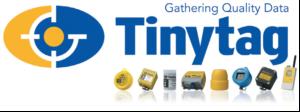| Home> | Warehouse IT | >Voice | >Data logging systems |
ARTICLE
Data logging systems
12 December 2012
Tinytag data loggers from Gemini help companies carry out research, improve quality control processes and meet regulations by providing robust temperature solutions. Tinytags, conventional data loggers, provide cost e

Tinytag data loggers from Gemini
help companies carry out research,
improve quality control processes
and meet regulations by providing
robust temperature solutions.
Tinytags, conventional data loggers, provide cost efficient monitoring of a few locations, but when numerous different areas need to be monitored, Tinytag wireless data logging systems save time and money.
The Tinytag wireless data logging system allows users to collate data at one central point, rather than download each individual data logger.
It is a reliable mesh network of communications that will give users peace of mind. Each radio logger receives, stores, and transmits data to other radio loggers as well as the central receiver.
The loggers have their own local memory to avoid loss of data in case of dropped signals. The user places each logger within 200m of another, and there is no limit to the amount that can be used. This self-configuring army of loggers will transmit data back to the receiver connected to a PC. If a temporary obstruction occurs, for example a forklift truck in the way, data will be sent back to the receiver via a neighbouring logger.
Tinytags, conventional data loggers, provide cost efficient monitoring of a few locations, but when numerous different areas need to be monitored, Tinytag wireless data logging systems save time and money.
The Tinytag wireless data logging system allows users to collate data at one central point, rather than download each individual data logger.
It is a reliable mesh network of communications that will give users peace of mind. Each radio logger receives, stores, and transmits data to other radio loggers as well as the central receiver.
The loggers have their own local memory to avoid loss of data in case of dropped signals. The user places each logger within 200m of another, and there is no limit to the amount that can be used. This self-configuring army of loggers will transmit data back to the receiver connected to a PC. If a temporary obstruction occurs, for example a forklift truck in the way, data will be sent back to the receiver via a neighbouring logger.
MORE FROM THIS COMPANY
RELATED ARTICLES
OTHER ARTICLES IN THIS SECTION










/GRABOMATIC LOGO-tn.jpg)
















